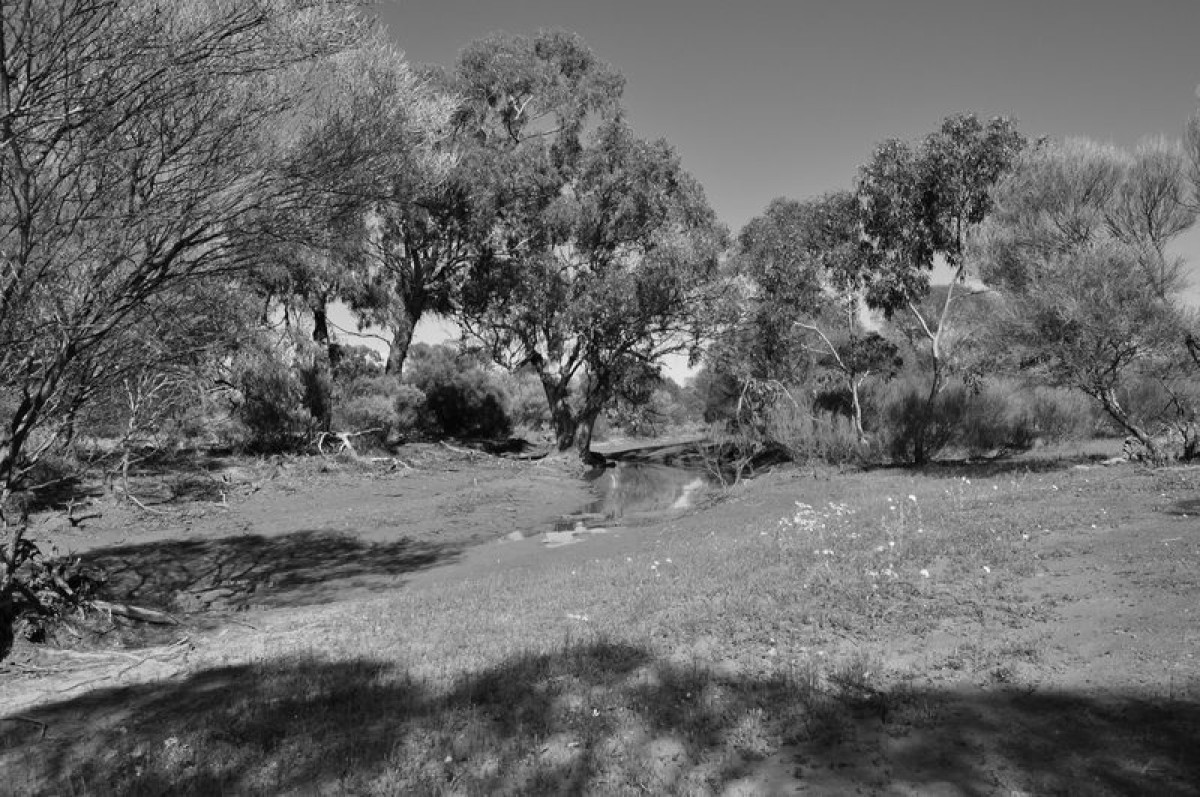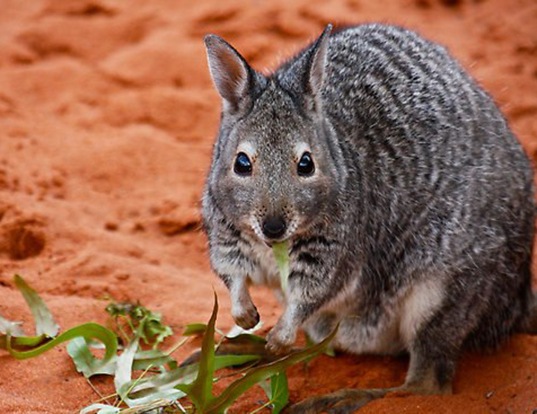SPECIES: Lagostrophus fasciatus fasciatus — Banded Hare-wallaby, Mernine, Marnine, Munning
CLASSIFICATION: Vulnerable
The first sightings of the Banded Hare-wallaby even pre-date European settlement. It was first recorded when the French were making expeditions out to Australia in the early 1800s. As is the story for many of our native mammals, the Banded Hare-wallaby was once found throughout south-west WA and SA. Extinct on the mainland since the 1960s, this species of Wallaby is only found on Bernier and Dorre Islands off the coast of WA.
Also known by its indigenous names, Munning or Mernine, the Banded Hare-wallaby is quite a petite little package, at around 65cm from top of its head to the tip of its tail. Females are larger than males. It has a short nose, long grey fur specked with yellow and silder and fades into a light grey on its underbelly. Its distinguishing feature are the dark, horizontal stripes of fur that start at the middle of its back all the way down to the base of the tail. It's noctural, social and prefers to live in groups. A female will usually only rear one joey for the season. However, like other kangaroo and wallaby species, the female has the abilty to delay the deveopment of a fertilised egg (called 'embryonic diapause') if there is already a joey in pouch. Major threats are the usual list of suspects: loss and destruction of habitat, competition for food and predators (foxes and feral cats).

